Sat Mag
Visionary Educators: Trilicia Gunawardena at Govt. College of Art & Crafts
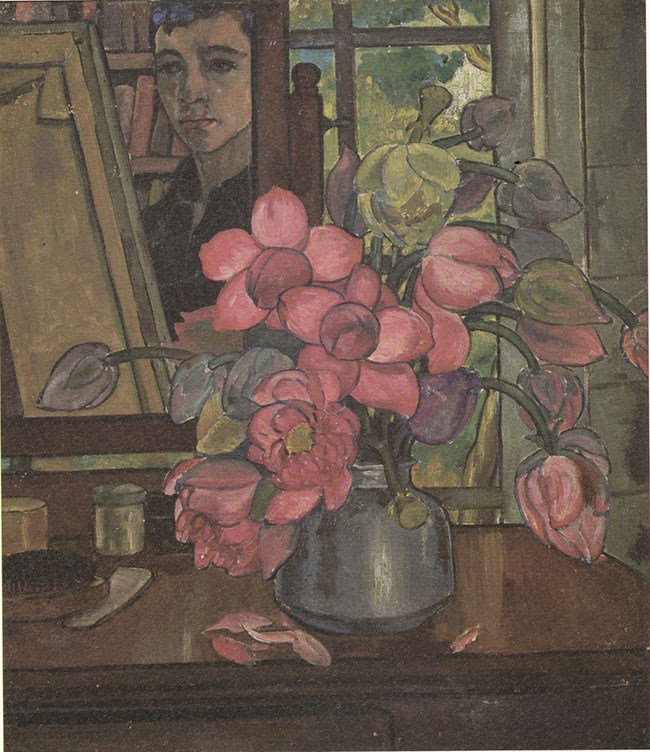
by Laleen Jayamanne
I knew Trilicia Gunawardena, as so many others did, only in her famously memorable role of the tragic princess in Maname and later as an actress in films. It is only now that I am learning about her philosophy of education and her extraordinary sense of duty of care for her students, and her imagination as a teacher of English as a second language (ESL), at the Government College of Art and Crafts, in Horton Place, in the 1970s. Professor A. J. Gunawardena and Trilicia, a familiar husband and wife duo in the art world, would drop in to observe Dhamma Jagoda’s theatre workshop which started in 1970, in Harold Peiris’ open garage, a makeshift space, generously given by Peiris until the Lionel Wendt Theatre (of which he was a trustee), was renovated and ready for us to move into much later as, ‘The Art Centre Theatre Workshop’. I have also just begun to read A. J. Gunawardena’s expansive and informative art reviews in The Island, written under the pen name, Jayadeva; they opened up an entire social and cultural milieu for someone like me, who was not in the country during most of the war years of the 90s. Though I was there to do some research, I left soon after President Ranasinghe Premadasa was assassinated by a suicide bomber and the political situation became very volatile. I think some of what A. J. Gunawardena wrote in the 90s is worth remembering now and I will touch on it shortly. It is sad to read that this generous and talented couple died in quick succession in the late 1990s, while still in their mid-sixties, with so much left to contribute to enriching the cultural and intellectual life of the country.
Just before leaving to study drama at New York University, in 1971, I went to meet Professor Gunawardena to get an introduction to Professor Richard Schechner, with whom he had studied and worked while he was a graduate student at NYU. I knew that he had guest-edited a Double Issue of the prestigious theatre journal TDR (which came out of the department), on traditional Asian theatre and kindly introduced me to the guru of environmental and ritual theatre and performance studies, Schechner. I remember the very first class with him. We were all seated on the floor cross-legged while he, the guru, sat on a chair cross-legged, without shoes. He had just returned from a research trip to India. We went around the class introducing ourselves. There were two male students from Nigeria and a woman from South Korea and the rest were all Americans. During that difficult year, It was while sitting through the mind-numbingly boring seminars in the NYU post-graduate theatre programme (costing an arm and a leg), that my mind began to drift and I began to slowly understand deeply the value of several of my professors in Ceylon with whom I had studied and who I loved dearly. It was then that I began to become critically aware of why a course or a syllabus, didn’t make much sense or why a subject that ought to have been interesting (like the history of European radical avant-garde theatre for example), was made so deadly dull by some of those famous specialists whose methods, or styles, of teaching, were not very engaging either. So, instead of learning much about performance, I began the long process of understanding, with difficulty, what a philosophy of education might mean and why it mattered. I feel I am still learning and still interested in methods of teaching film, and understanding how film teaches us to perceive, feel and think in most unusual ways.
I. M. Kuruvilla, who taught English at Aquinas University College, opened up a whole new world of literature (Italian, Spanish, Portuguese, Malayalam) and Indian independent cinema and Lankan painting of Justine Deraniyagala for instance. Kuru, as we called him, was a Keralite, who was sent to Jaffna for his high school and university education and then came down to Colombo, married, had a family, and taught English literature to generations of students at Aquinas University College. Though he suffered from Parkinson’s disease he taught tirelessly with great energy till he was old enough to retire, never having missed a single class. Professor Cuthbert Amarasinghe’s lectures on Greek drama at the Peradeniya University, left an indelible impression on us as did his research published in a prestigious classics journal which he encouraged us to read. His study of the chorus in Greek drama was truly brilliant, I realised much later. These subjects and how they were taught and the duty of care these men showed us, their faith in us, gave us a solid intellectual foundation so that we could branch off into other unfamiliar areas with some degree of confidence later. We were truly fortunate to get a ‘world class’ education in old Ceylon.
But it was in Australia that I was able to consolidate my understanding of why a well-formulated philosophy of education mattered and how that determines the kind of curriculum one might develop, and the way one actually taught and behaved in the classroom. These changes to education happened in an intellectual environment where Film and Media Studies disturbed the traditional Humanities methodologies in English lit, Art History and Philosophy, for example, in the post-1968 era of the Anglophone humanities education revolution. The rise of the Feminist Movement in the late 1960s gave rise to new disciplinary areas in the 70s such as Women’s Studies, which much later became Gender. An International journal culture in English disseminated radical ideas developed in Europe through the translation of major theoretical texts from the German, French and Italian, some influenced by Marxism and ‘New Left’ thinking and others by the developments in structural linguistics, semiotics and soon after, the post-structuralist explosion of critical theory.
May 1968 in Paris is considered a key event in new left politics, where there was a spontaneous uprising of workers and students against authoritarianism in the Universities and factories, the Vietnam war and the government of President de Gaulle (1959-1969). The powerful communist party of France was also sidelined by new alliances and President de Gaulle’s government was ousted, soon after an initial victory at the polls. In the wake of an unusual sense of social freedom and openness and questioning of old hierarchical ways of doing things, there were educational experiments in Universities and in institutions of the media, especially in the anti-psychiatry movement, which developed new, more humane ways of understanding and treating mental illness. The traditional boundaries that divided disciplinary areas were questioned and interdisciplinary methodologies were developed to understand the social field in a state of unusual flux and transformation. University courses in the new campuses were opened to migrant workers from North Africa, without the requisite qualifications. Grading was abandoned in favour of attendance and participation in the class. The University of Technology, Sydney, where I taught briefly, also adopted this policy in their new Media Studies degree.
At this distance from Sri Lanka, just by following what’s happening there now across the country and at Galle Face, on YouTube, Facebook and through the newspapers, in English and Sinhala, one gets some sense of what May ’68 in Paris might have also felt like, just at the level of certain hard social barriers falling and the opening up of the social field to experimentation led by youth in alliance with the workers. But with the ever-present fear of the armed forces and police controlled by the state on guard. And when the police did attack the students, 10 million workers joined in with a general strike. The workers did win pay rises and also the right to early retirement. But of course, the level of urgent material deprivation and the major economic crisis and that of governance is specific to this moment in Sri Lanka. I hear now academics and students discuss the importance of a renewal of educational goals and methods and the need to fundamentally challenge the neoliberal university policies that have strangled creative thought and made education into a commodity with all the violence that does to the mind and creative processes of thinking. Within this context, it would be worth remembering a visionary teacher like Trilicia who invented her own methods of teaching, suited to the specific conditions on the ground, under difficult conditions produced by the 1970’s socialist economic policies of the Sirimavo Bandaranaike government.
Trilicia Gunawardena’s Teaching Methods and Duty of Care
I learnt of Trilicia’s method of teaching the English language and details of how she cared for her students from several publications of Sarath Chandrajeewa. He was a student of her’s in the 1970s at the Government College of Art & Crafts and pays tribute to her in his scholarly writing by documenting her practice. His detailed descriptions bring her to life as a generous, friendly and kind teacher with a sense of humour. She was also very creative in her lesson plan.
“She used to select a biography of one of the western masters for her English lesson each day. In this way, we were to learn stories of the masters and their works. We learnt the history of art and the English language at the same time”.
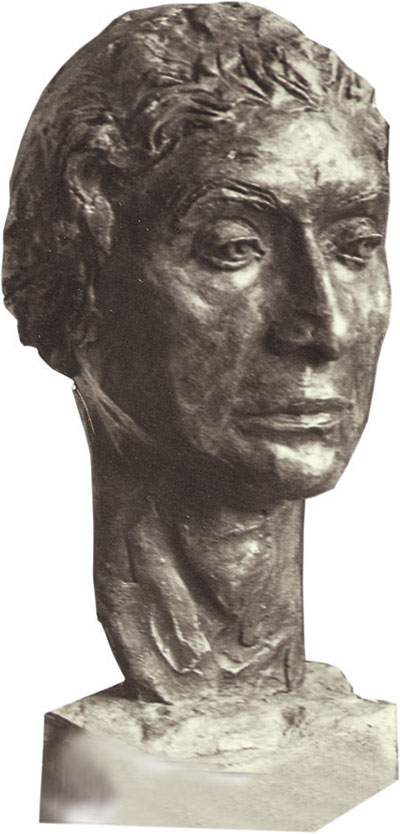
Paulo Freire and other Latin American radical educational theorists of the 1960s who wrote on the ‘Pedagogy of the Oppressed’, spoke of such integration as being essential to motivate students to learn. Because the English classes were soon after the lunch break and students tended to nod off, Trilicia would sing songs from Maname to keep them awake! From Chandrajeewa’s documentation, one gets a sense of how much Trilicia herself enjoyed her teaching, which is a rare perspective indeed on a teacher. At the end of the term, she would bring a large delicious cream caramel as a treat and students would climb the jack fruit trees, break leaves and make cones to eat it in. The political-economic background of this era is described by Chandrajeewa to show how it affected art students in their studies very directly.
“The ‘70s was a very difficult time period for our society. Commodities like rice and chillies were rationed and they were given based on coupons. Police checked people at security posts and took into custody those who carried such items more than they were allowed to. There were queues everywhere to buy bread at bakeries and to get rations at cooperative stores. Due to the closed economy policy of the ‘United Front Government’,which came into power in 1970, imported goods like watercolours, special papers, oil paints, canvases, brushes and paints for printmaking were hard to find and their prices were also increased exorbitantly. The student loan was only Rs 150 per month.
There was a food shortage in the 1970s. A poem written in very large letters on the canteen wall in Kelaniya Campus was also written on our university canteen. This poem symbolises the food shortage at that time”.
bread and dhal one day be Buddha
cabbage and potatoes be Sariyuth and Mugalan
“Teachers and students who did not join in our tour of the North (Jaffna), contributed by donating dry ingredients and pre-cooked foods.
Trilicia Gunawardena gave us three large pans full of pickles, brinjal moju and fish ambulthiyal, to take on our trip to last many days. This was the biggest donation of all.”
(Jaffna Doors & Windows, Reminiscences, Sarath Chandrajeewa. P. 32, footnote 14.)
The ‘70s was the era when teaching at the Government College of Art & Crafts was still bilingual which enabled Tamil students from Jaffna to study in Colombo, in English, and there were structured exchange programs between the North and the South. All of this came to an end through the student-led ‘Sinhala only’ activism which rejected the study of western art history and centred the curriculum on Sinhala-Buddhist art history. In the previous decade, the student union-led protests against anything perceived as ‘western’ included breaking the glass which framed the large prints of Western Modernist masters decorating the walls of the school in 1963. These prints (given as a gift by David Paynter who headed the school and taught there), I gather, were auctioned off sometime prior to 2005, and I wonder what replaced them. David Paynter, a fine painter himself according to his peers, was pushed out of the institution to which he was dedicated, with a slogan of great shame pasted on placards:
“Burgher suddha david pintharuwa gedara palayan.”
The current slogan, ‘Gotagogama’, is far more linguistically polite than the verb ‘palayan’, used here against a dedicated teacher who the Sinhala chauvinist students considered a racial inferior! And all this was done in the name of Sinhala-Buddhist values. The pithy alliteration of the hashtag however shows a new linguistic sensibility among the young Sinhala intelligentsia, which Professor Michael Roberts would definitely hail as an innovative ‘thuppahification’ (hybridisation) of the suddhe Sinhala, with which I heartily agree.
As all teachers who care for their students, Trilicia also paid special attention to the capabilities and talents students exhibited and would guide them in their choices. So it was that she advised Chandrajeewa to focus on sculpture and advised him to study bronze casting with Tissa Ranasinghe who was by then teaching the craft at the Royal College of Art in London. Ranasinghe, who was the preeminent modern bronze sculptor of Lanka and also the head of the art school where he taught, was forced to leave because of the misguided student protests against his teaching and ideas as being ‘western’. I have referred to the painful details in a previous piece for The Island (13/4/22). Many years later while he was working for the National Youth Services Council, Trilicia suggested to Sarath to apply for a university teaching post. She had in fact brought him the forms to apply for a lecturing position at the Institute of Aesthetic Studies, of the University of Kelaniya. This kind of guidance and actions are the signs of a teacher who cares about students as much as the institution she works in and helps to create a nurturing, generous, intellectually rigorous academic milieu for all to thrive in. It demonstrates a strong belief in a merit-based institution rather than one based on political nepotism. It’s worth remembering ethical teachers such as Trilicia because we know that institutions of higher education, and especially the Institute of Aesthetic Studies or previously, the Government College of Art & Crafts, have been undermined by political appointments and sackings.
(To be continued)
Sat Mag
October 13 at the Women’s T20 World Cup: Injury concerns for Australia ahead of blockbuster game vs India
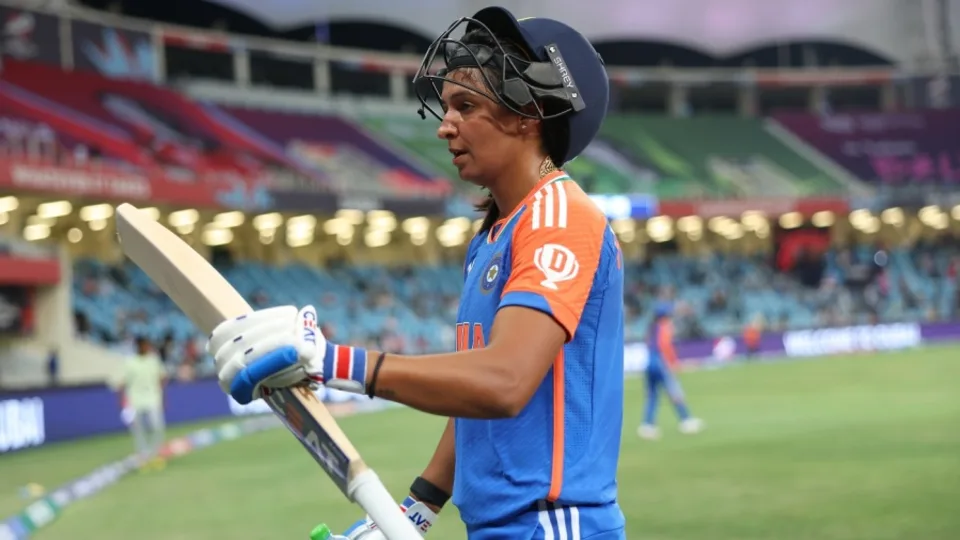
Australia vs India
Sharjah, 6pm local time
Australia have major injury concerns heading into the crucial clash. Just four balls into the match against Pakistan, Tayla Vlaeminck was out with a right shoulder dislocation. To make things worse, captain Alyssa Healy suffered an acute right foot injury while batting on 37 as she hobbled off the field with Australia needing 14 runs to win. Both players went for scans on Saturday.
India captain Harmanpreet Kaur who had hurt her neck in the match against Pakistan, turned up with a pain-relief patch on the right side of her neck during the Sri Lanka match. She also didn’t take the field during the chase. Fast bowler Pooja Vastrakar bowled full-tilt before the Sri Lanka game but didn’t play.
India will want a big win against Australia. If they win by more than 61 runs, they will move ahead of Australia, thereby automatically qualifying for the semi-final. In a case where India win by fewer than 60 runs, they will hope New Zealand win by a very small margin against Pakistan on Monday. For instance, if India make 150 against Australia and win by exactly 10 runs, New Zealand need to beat Pakistan by 28 runs defending 150 to go ahead of India’s NRR. If India lose to Australia by more than 17 runs while chasing a target of 151, then New Zealand’s NRR will be ahead of India, even if Pakistan beat New Zealand by just 1 run while defending 150.
Overall, India have won just eight out of 34 T20Is they’ve played against Australia. Two of those wins came in the group-stage games of previous T20 World Cups, in 2018 and 2020.
Australia squad:
Alyssa Healy (capt & wk), Darcie Brown, Ashleigh Gardner, Kim Garth, Grace Harris, Alana King, Phoebe Litchfield, Tahlia McGrath, Sophie Molineux, Beth Mooney, Ellyse Perry, Megan Schutt, Annabel Sutherland, Tayla Vlaeminck, Georgia Wareham
India squad:
Harmanpreet Kaur (capt), Smriti Mandhana (vice-capt), Yastika Bhatia (wk), Shafali Verma, Deepti Sharma, Jemimah Rodrigues, Richa Ghosh (wk), Pooja Vastrakar, Arundhati Reddy, Renuka Singh, D Hemalatha, Asha Sobhana, Radha Yadav, Shreyanka Patil, S Sajana
Tournament form guide:
Australia have three wins in three matches and are coming into this contest having comprehensively beaten Pakistan. With that win, they also all but sealed a semi-final spot thanks to their net run rate of 2.786. India have two wins in three games. In their previous match, they posted the highest total of the tournament so far – 172 for 3 and in return bundled Sri Lanka out for 90 to post their biggest win by runs at the T20 World Cup.
Players to watch:
Two of their best batters finding their form bodes well for India heading into the big game. Harmanpreet and Mandhana’s collaborative effort against Pakistan boosted India’s NRR with the semi-final race heating up. Mandhana, after a cautious start to her innings, changed gears and took on Sri Lanka’s spinners to make 50 off 38 balls. Harmanpreet, continuing from where she’d left against Pakistan, played a classic, hitting eight fours and a six on her way to a 27-ball 52. It was just what India needed to reinvigorate their T20 World Cup campaign.
[Cricinfo]
Sat Mag
Living building challenge

By Eng. Thushara Dissanayake
The primitive man lived in caves to get shelter from the weather. With the progression of human civilization, people wanted more sophisticated buildings to fulfill many other needs and were able to accomplish them with the help of advanced technologies. Security, privacy, storage, and living with comfort are the common requirements people expect today from residential buildings. In addition, different types of buildings are designed and constructed as public, commercial, industrial, and even cultural or religious with many advanced features and facilities to suit different requirements.
We are facing many environmental challenges today. The most severe of those is global warming which results in many negative impacts, like floods, droughts, strong winds, heatwaves, and sea level rise due to the melting of glaciers. We are experiencing many of those in addition to some local issues like environmental pollution. According to estimates buildings account for nearly 40% of all greenhouse gas emissions. In light of these issues, we have two options; we change or wait till the change comes to us. Waiting till the change come to us means that we do not care about our environment and as a result we would have to face disastrous consequences. Then how can we change in terms of building construction?
Before the green concept and green building practices come into play majority of buildings in Sri Lanka were designed and constructed just focusing on their intended functional requirements. Hence, it was much likely that the whole process of design, construction, and operation could have gone against nature unless done following specific regulations that would minimize negative environmental effects.
We can no longer proceed with the way we design our buildings which consumes a huge amount of material and non-renewable energy. We are very concerned about the food we eat and the things we consume. But we are not worrying about what is a building made of. If buildings are to become a part of our environment we have to design, build and operate them based on the same principles that govern the natural world. Eventually, it is not about the existence of the buildings, it is about us. In other words, our buildings should be a part of our natural environment.
The living building challenge is a remarkable design philosophy developed by American architect Jason F. McLennan the founder of the International Living Future Institute (ILFI). The International Living Future Institute is an environmental NGO committed to catalyzing the transformation toward communities that are socially just, culturally rich, and ecologically restorative. Accordingly, a living building must meet seven strict requirements, rather certifications, which are called the seven “petals” of the living building. They are Place, Water, Energy, Equity, Materials, Beauty, and Health & Happiness. Presently there are about 390 projects around the world that are being implemented according to Living Building certification guidelines. Let us see what these seven petals are.
Place
This is mainly about using the location wisely. Ample space is allocated to grow food. The location is easily accessible for pedestrians and those who use bicycles. The building maintains a healthy relationship with nature. The objective is to move away from commercial developments to eco-friendly developments where people can interact with nature.
Water
It is recommended to use potable water wisely, and manage stormwater and drainage. Hence, all the water needs are captured from precipitation or within the same system, where grey and black waters are purified on-site and reused.
Energy
Living buildings are energy efficient and produce renewable energy. They operate in a pollution-free manner without carbon emissions. They rely only on solar energy or any other renewable energy and hence there will be no energy bills.
Equity
What if a building can adhere to social values like equity and inclusiveness benefiting a wider community? Yes indeed, living buildings serve that end as well. The property blocks neither fresh air nor sunlight to other adjacent properties. In addition, the building does not block any natural water path and emits nothing harmful to its neighbors. On the human scale, the equity petal recognizes that developments should foster an equitable community regardless of an individual’s background, age, class, race, gender, or sexual orientation.
Materials
Materials are used without harming their sustainability. They are non-toxic and waste is minimized during the construction process. The hazardous materials traditionally used in building components like asbestos, PVC, cadmium, lead, mercury, and many others are avoided. In general, the living buildings will not consist of materials that could negatively impact human or ecological health.
Beauty
Our physical environments are not that friendly to us and sometimes seem to be inhumane. In contrast, a living building is biophilic (inspired by nature) with aesthetical designs that beautify the surrounding neighborhood. The beauty of nature is used to motivate people to protect and care for our environment by connecting people and nature.
Health & Happiness
The building has a good indoor and outdoor connection. It promotes the occupants’ physical and psychological health while causing no harm to the health issues of its neighbors. It consists of inviting stairways and is equipped with operable windows that provide ample natural daylight and ventilation. Indoor air quality is maintained at a satisfactory level and kitchen, bathrooms, and janitorial areas are provided with exhaust systems. Further, mechanisms placed in entrances prevent any materials carried inside from shoes.
The Bullitt Center building
Bullitt Center located in the middle of Seattle in the USA, is renowned as the world’s greenest commercial building and the first office building to earn Living Building certification. It is a six-story building with an area of 50,000 square feet. The area existed as a forest before the city was built. Hence, the Bullitt Center building has been designed to mimic the functions of a forest.
The energy needs of the building are purely powered by the solar system on the rooftop. Even though Seattle is relatively a cloudy city the Bullitt Center has been able to produce more energy than it needed becoming one of the “net positive” solar energy buildings in the world. The important point is that if a building is energy efficient only the area of the roof is sufficient to generate solar power to meet its energy requirement.
It is equipped with an automated window system that is able to control the inside temperature according to external weather conditions. In addition, a geothermal heat exchange system is available as the source of heating and cooling for the building. Heat pumps convey heat stored in the ground to warm the building in the winter. Similarly, heat from the building is conveyed into the ground during the summer.
The potable water needs of the building are achieved by treating rainwater. The grey water produced from the building is treated and re-used to feed rooftop gardens on the third floor. The black water doesn’t need a sewer connection as it is treated to a desirable level and sent to a nearby wetland while human biosolid is diverted to a composting system. Further, nearly two third of the rainwater collected from the roof is fed into the groundwater and the process resembles the hydrologic function of a forest.
It is encouraging to see that most of our large-scale buildings are designed and constructed incorporating green building concepts, which are mainly based on environmental sustainability. The living building challenge can be considered an extension of the green building concept. Amanda Sturgeon, the former CEO of the ILFI, has this to say in this regard. “Before we start a project trying to cram in every sustainable solution, why not take a step outside and just ask the question; what would nature do”?
Sat Mag
Something of a revolution: The LSSP’s “Great Betrayal” in retrospect
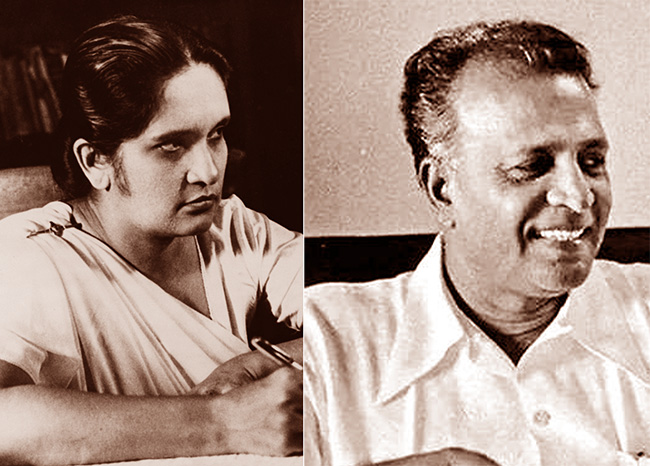
By Uditha Devapriya
On June 7, 1964, the Central Committee of the Lanka Sama Samaja Party convened a special conference at which three resolutions were presented. The first, moved by N. M. Perera, called for a coalition with the SLFP, inclusive of any ministerial portfolios. The second, led by the likes of Colvin R. de Silva, Leslie Goonewardena, and Bernard Soysa, advocated a line of critical support for the SLFP, but without entering into a coalition. The third, supported by the likes of Edmund Samarakkody and Bala Tampoe, rejected any form of compromise with the SLFP and argued that the LSSP should remain an independent party.
The conference was held a year after three parties – the LSSP, the Communist Party, and Philip Gunawardena’s Mahajana Eksath Peramuna – had founded a United Left Front. The ULF’s formation came in the wake of a spate of strikes against the Sirimavo Bandaranaike government. The previous year, the Ceylon Transport Board had waged a 17-day strike, and the harbour unions a 60-day strike. In 1963 a group of working-class organisations, calling itself the Joint Committee of Trade Unions, began mobilising itself. It soon came up with a common programme, and presented a list of 21 radical demands.
In response to these demands, Bandaranaike eventually supported a coalition arrangement with the left. In this she was opposed, not merely by the right-wing of her party, led by C. P. de Silva, but also those in left parties opposed to such an agreement, including Bala Tampoe and Edmund Samarakkody. Until then these parties had never seen the SLFP as a force to reckon with: Leslie Goonewardena, for instance, had characterised it as “a Centre Party with a programme of moderate reforms”, while Colvin R. de Silva had described it as “capitalist”, no different to the UNP and by default as bourgeois as the latter.
The LSSP’s decision to partner with the government had a great deal to do with its changing opinions about the SLFP. This, in turn, was influenced by developments abroad. In 1944, the Fourth International, which the LSSP had affiliated itself with in 1940 following its split with the Stalinist faction, appointed Michel Pablo as its International Secretary. After the end of the war, Pablo oversaw a shift in the Fourth International’s attitude to the Soviet states in Eastern Europe. More controversially, he began advocating a strategy of cooperation with mass organisations, regardless of their working-class or radical credentials.
Pablo argued that from an objective perspective, tensions between the US and the Soviet Union would lead to a “global civil war”, in which the Soviet Union would serve as a midwife for world socialist revolution. In such a situation the Fourth International would have to take sides. Here he advocated a strategy of entryism vis-à-vis Stalinist parties: since the conflict was between Stalinist and capitalist regimes, he reasoned, it made sense to see the former as allies. Such a strategy would, in his opinion, lead to “integration” into a mass movement, enabling the latter to rise to the level of a revolutionary movement.

Though controversial, Pablo’s line is best seen in the context of his times. The resurgence of capitalism after the war, and the boom in commodity prices, had a profound impact on the course of socialist politics in the Third World. The stunted nature of the bourgeoisie in these societies had forced left parties to look for alternatives. For a while, Trotsky had been their guide: in colonial and semi-colonial societies, he had noted, only the working class could be expected to see through a revolution. This entailed the establishment of workers’ states, but only those arising from a proletarian revolution: a proposition which, logically, excluded any compromise with non-radical “alternatives” to the bourgeoisie.
To be sure, the Pabloites did not waver in their support for workers’ states. However, they questioned whether such states could arise only from a proletarian revolution. For obvious reasons, their reasoning had great relevance for Trotskyite parties in the Third World. The LSSP’s response to them showed this well: while rejecting any alliance with Stalinist parties, the LSSP sympathised with the Pabloites’ advocacy of entryism, which involved a strategic orientation towards “reformist politics.” For the world’s oldest Trotskyite party, then going through a series of convulsions, ruptures, and splits, the prospect of entering the reformist path without abandoning its radical roots proved to be welcoming.
Writing in the left-wing journal Community in 1962, Hector Abhayavardhana noted some of the key concerns that the party had tried to resolve upon its formation. Abhayavardhana traced the LSSP’s origins to three developments: international communism, the freedom struggle in India, and local imperatives. The latter had dictated the LSSP’s manifesto in 1936, which included such demands as free school books and the use of Sinhala and Tamil in the law courts. Abhayavardhana suggested, correctly, that once these imperatives changed, so would the party’s focus, though within a revolutionary framework. These changes would be contingent on two important factors: the establishment of universal franchise in 1931, and the transfer of power to the local bourgeoisie in 1948.
Paradoxical as it may seem, the LSSP had entered the arena of radical politics through the ballot box. While leading the struggle outside parliament, it waged a struggle inside it also. This dual strategy collapsed when the colonial government proscribed the party and the D. S. Senanayake government disenfranchised plantation Tamils. Suffering two defeats in a row, the LSSP was forced to think of alternatives. That meant rethinking categories such as class, and grounding them in the concrete realities of the country.
This was more or less informed by the irrelevance of classical and orthodox Marxian analysis to the situation in Sri Lanka, specifically to its rural society: with a “vast amorphous mass of village inhabitants”, Abhayavardhana observed, there was no real basis in the country for a struggle “between rich owners and the rural poor.” To complicate matters further, reforms like the franchise and free education, which had aimed at the emancipation of the poor, had in fact driven them away from “revolutionary inclinations.” The result was the flowering of a powerful rural middle-class, which the LSSP, to its discomfort, found it could not mobilise as much as it had the urban workers and plantation Tamils.
Where else could the left turn to? The obvious answer was the rural peasantry. But the rural peasantry was in itself incapable of revolution, as Hector Abhayavardhana has noted only too clearly. While opposing the UNP’s Westernised veneer, it did not necessarily oppose the UNP’s overtures to Sinhalese nationalism. As historians like K. M. de Silva have observed, the leaders of the UNP did not see their Westernised ethos as an impediment to obtaining support from the rural masses. That, in part at least, was what motivated the Senanayake government to deprive Indian estate workers of their most fundamental rights, despite the existence of pro-minority legal safeguards in the Soulbury Constitution.
To say this is not to overlook the unique character of the Sri Lankan rural peasantry and petty bourgeoisie. Orthodox Marxists, not unjustifiably, characterise the latter as socially and politically conservative, tilting more often than not to the right. In Sri Lanka, this has frequently been the case: they voted for the UNP in 1948 and 1952, and voted en masse against the SLFP in 1977. Yet during these years they also tilted to the left, if not the centre-left: it was the petty bourgeoisie, after all, which rallied around the SLFP, and supported its more important reforms, such as the nationalisation of transport services.
One must, of course, be wary of pasting the radical tag on these measures and the classes that ostensibly stood for them. But if the Trotskyite critique of the bourgeoisie – that they were incapable of reform, even less revolution – holds valid, which it does, then the left in the former colonies of the Third World had no alternative but to look elsewhere and to be, as Abhayavardhana noted, “practical men” with regard to electoral politics. The limits within which they had to work in Sri Lanka meant that, in the face of changing dynamics, especially among the country’s middle-classes, they had to change their tactics too.
Meanwhile, in 1953, the Trotskyite critique of Pabloism culminated with the publication of an Open Letter by James Cannon, of the US Socialist Workers’ Party. Cannon criticised the Pabloite line, arguing that it advocated a policy of “complete submission.” The publication of the letter led to the withdrawal of the International Committee of the Fourth International from the International Secretariat. The latter, led by Pablo, continued to influence socialist parties in the Third World, advocating temporary alliances with petty bourgeois and centrist formations in the guise of opposing capitalist governments.
For the LSSP, this was a much-needed opening. Even as late as 1954, three years after S. W. R. D. Bandaranaike formed the SLFP, the LSSP continued to characterise the latter as the alternative bourgeois party in Ceylon. Yet this did not deter it from striking up no contest pacts with Bandaranaike at the 1956 election, a strategy that went back to November 1951, when the party requested the SLFP to hold a discussion about the possibility of eliminating contests in the following year’s elections. Though it extended critical support to the MEP government in 1956, the LSSP opposed the latter once it enacted emergency measures in 1957, mobilising trade union action for a period of three years.
At the 1960 election the LSSP contested separately, with the slogan “N. M. for P.M.” Though Sinhala nationalism no longer held sway as it had in 1956, the LSSP found itself reduced to a paltry 10 seats. It was against this backdrop that it began rethinking its strategy vis-à-vis the ruling party. At the throne speech in April 1960, Perera openly declared that his party would not stabilise the SLFP. But a month later, in May, he called a special conference, where he moved a resolution for a coalition with the party. As T. Perera has noted in his biography of Edmund Samarakkody, the response to the resolution unearthed two tendencies within the oppositionist camp: the “hardliners” who opposed any compromise with the SLFP, including Samarakkody, and the “waverers”, including Leslie Goonewardena.
These tendencies expressed themselves more clearly at the 1964 conference. While the first resolution by Perera called for a complete coalition, inclusive of Ministries, and the second rejected a coalition while extending critical support, the third rejected both tactics. The outcome of the conference showed which way these tendencies had blown since they first manifested four years earlier: Perera’s resolution obtained more than 500 votes, the second 75 votes, the third 25. What the anti-coalitionists saw as the “Great Betrayal” of the LSSP began here: in a volte-face from its earlier position, the LSSP now held the SLFP as a party of a radical petty bourgeoisie, capable of reform.
History has not been kind to the LSSP’s decision. From 1970 to 1977, a period of less than a decade, these strategies enabled it, as well as the Communist Party, to obtain a number of Ministries, as partners of a petty bourgeois establishment. This arrangement collapsed the moment the SLFP turned to the right and expelled the left from its ranks in 1975, in a move which culminated with the SLFP’s own dissolution two years later.
As the likes of Samarakkody and Meryl Fernando have noted, the SLFP needed the LSSP and Communist Party, rather than the other way around. In the face of mass protests and strikes in 1962, the SLFP had been on the verge of complete collapse. The anti-coalitionists in the LSSP, having established themselves as the LSSP-R, contended later on that the LSSP could have made use of this opportunity to topple the government.
Whether or not the LSSP could have done this, one can’t really tell. However, regardless of what the LSSP chose to do, it must be pointed out that these decades saw the formation of several regimes in the Third World which posed as alternatives to Stalinism and capitalism. Moreover, the LSSP’s decision enabled it to see through certain important reforms. These included Workers’ Councils. Critics of these measures can point out, as they have, that they could have been implemented by any other regime. But they weren’t. And therein lies the rub: for all its failings, and for a brief period at least, the LSSP-CP-SLFP coalition which won elections in 1970 saw through something of a revolution in the country.
The writer is an international relations analyst, researcher, and columnist based in Sri Lanka who can be reached at udakdev1@gmail.com
-
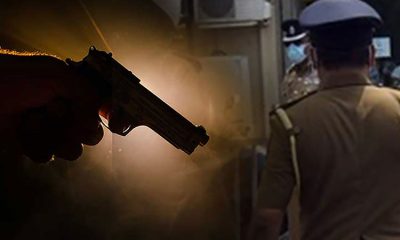
 News5 days ago
News5 days agoSuspect injured in police shooting hospitalised
-

 Features6 days ago
Features6 days agoRobbers and Wreckers
-

 Business6 days ago
Business6 days agoBhathiya Bulumulla – The Man I Knew
-

 Business5 days ago
Business5 days agoSanjiv Hulugalle appointed CEO and General Manager of Cinnamon Life at City of Dreams Sri Lanka
-
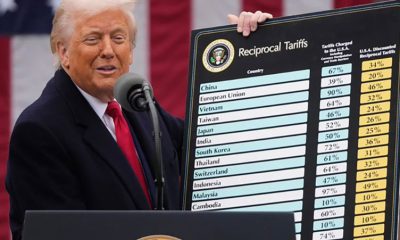
 Features4 days ago
Features4 days agoLiberation Day tariffs chaos could cause permanent damage to US economy, amid global tensions
-
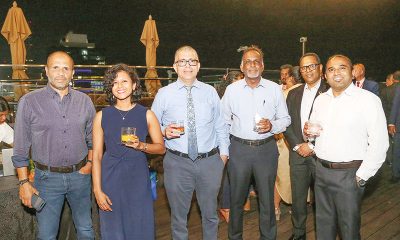
 Business4 days ago
Business4 days agoMembers’ Night of the Sri Lanka – Russia Business Council of The Ceylon Chamber of Commerce
-
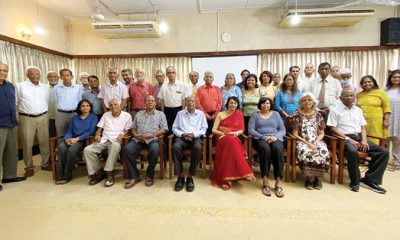
 Features4 days ago
Features4 days agoMinds and Memories picturing 65 years of Sri Lankan Politics and Society
-

 News5 days ago
News5 days agoLankan security forces Humanitarian Assistance and Relief Team working in Myanmar











